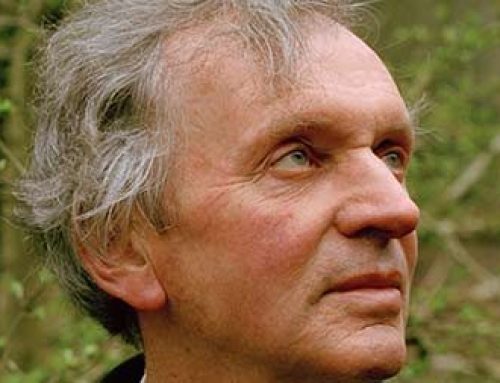Tucker, Stevenson, Weiss, and Life: Renditions of the Transcendent View From Past-Life Memories
John Gibbs, 2017
To download a pdf, please click here.
Abstract
The work of researcher Jim Tucker and regression therapist Brian Weiss on past-life memories suggests a transcendent or non-reductionist view of human life. In this view, mental life or consciousness does not entirely reduce to the neural activity of the brain, and bodily death involves a return to a nonphysical realm. This view is also suggested from other phenomena such as near-death experiences. The transcendent view from past-life memories entails two renditions. One rendition derives from Tucker’s—and late senior colleague Ian Stevenson’s—empirical verifications of children’s past-life claims. Weiss’s psychotherapy-based rendition is more impressionistic and subject to the vulnerabilities of the hypnotic method—as noted by both Tucker and Stevenson. Both renditions must contend with the theodicic problem (intensely rendered by Harold Kushner). Many questions remain. Nonetheless, Tucker’s, Stevenson’s, Weiss’s, and other authors’ related work may suffice to support a transcendent understanding of human life.
Introduction
What happens when a person dies? Physiologically, one’s heart stops beating, one stops breathing, and one’s eyes dilate and fix as brain function is lost (Parnia, 2006). Poetically, one’s breath becomes air (Kalanithi, 2016). “The living gaze—even if the person in question was very old and that gaze was vague and flickering—goes flat” (Alex-ander, 2014, p. x). But what happens to the person, to one’s individual self, mind, or consciousness? Does the individual continue to exist?
Is bodily death final, or does the person transition to a nonphysical realm? Is there an afterlife? Indeed, is there a “before” life? This last question speaks to this article’s focus: the view of human life derivable from work on past-life memories. What view of human existence does the evidence suggest?
The dominant answer in the scientific community to “what happens when a person dies?” has been a materialist one: that brain death means annihilation, that is, a total end to a person’s self, mind, or consciousness; correspondingly, the dominant materialist perspective negates existence prior to gestation and birth. As comparative psychologist Thomas Suddendorf (2013) asserted, “Ultimately, when our brain dies, all evidence points to the conclusion that our mind does, too” (p. 8). All evidence? Much evidence does point at least to an intimate relationship between brain and mind. Nonetheless, an array of evidence pertaining to human death and birth points to a transcendent or non-reductionist understanding of human existence. In this view, mental life does not entirely reduce to the neural activity of the brain, and bodily death involves a return to a deeper reality or realm.
This array of evidence points, then, to a “continuity of consciousness” (van Lommel, 2010) before birth, through earthly life, and beyond death. Whereas phenomena such as near-death experiences (NDEs), terminal lucidity, and deathbed visions (“nearing death awareness”) direct attention to questions of death and beyond, apparent recollections and re-experiencing of one or more supposed past lives direct attention to questions of birth and before. High on the current list of names of professionals whose attention has been so directed are those of three psychiatrists: Jim Tucker and Ian Stevenson, past-life memory researchers, and Brian L. Weiss, a regression psychotherapist. Their lines of work on past-life memory cases—spontaneous and hypnotically facilitated, respectively—have led to two distinguishable renditions of the transcendent view. As inclusion of their names in the title suggests, these authors’ works will be featured and narratively compared throughout this article.
Tucker and Stevenson: Investigators of Apparent Past-Life Memories
Most pertinent to evidence of transcendent human existence or a continuity of consciousness are empirical investigations of past-life claims. Tucker’s work has encompassed and extended from that of his late senior colleague, Ian Stevenson. Thanks in good measure to Stevenson’s and Tucker’s combined research over the course of more than 40 years, over 2,500 cases of children who have described memories of previous lives are documented in files at their home base, the University of Virginia.
Stevenson’s past-life research work began in 1958. By that year, Stevenson, already Chair of the Department of Psychiatry at the University of Virginia, had published extensively in medical journals. His interests ranged from biochemistry and psychosomatic effects to paranormal reports such as those of apparent past-life memory— especially, young children’s spontaneous utterances about previous lives. He considered such statements valuable not only because they were unprompted but also because they were presumably unlearned: young children’s “minds have not yet received through normal channels much information about deceased persons” (Stevenson, 2000, p. 55). Hence, he inferred that young children’s past-life claims are less attributable to cultural or parental input. Furthermore, many of the details in their utterances were specific enough to investigate for accuracy.
In 1960, Stevenson (1960a, 1960b) published a two-part paper in which he identified similarities despite cultural diversity across published cases of children’s past-life reports. Consequent to that publication, Stevenson learned of new cases and decided to investigate the accuracy of the reports. His approach was rigorously methodical, with “an attitude of maintaining a critical eye but also an open mind” (Tucker, 2013, p. 17). Work on the cases, in collaboration with interpreters and assistants, required trips to India, Ceylon (Sri Lanka), Brazil, and Lebanon. He published the results in Twenty Cases Suggestive of Reincarnation (Stevenson, 1974). Each case report listed the child’s pertinent statements as well as the names of those who provided information or confirmation. The cases were presented “in an objective, even-handed manner,” entailing discussion of “their weaknesses as well as their strengths” (Tucker, 2005, p. 19).

